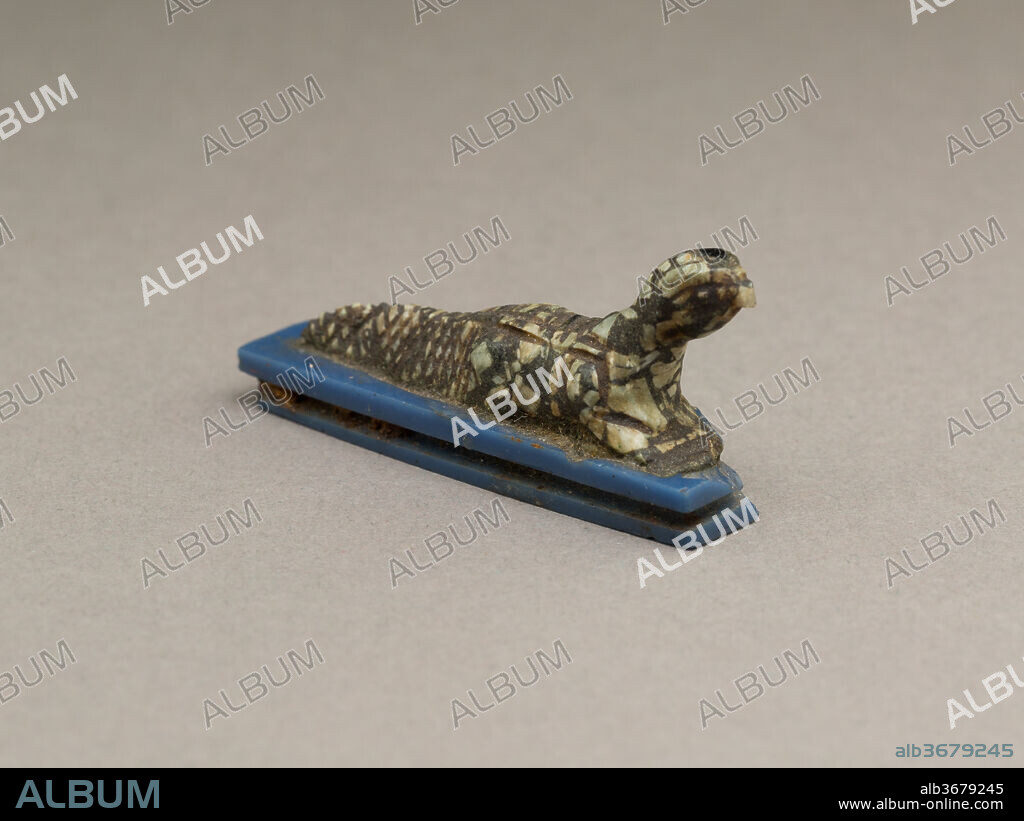alb3679245
Falcon-headed crocodile, possibly Soknopaios

|
Zu einem anderen Lightbox hinzufügen |
|
Zu einem anderen Lightbox hinzufügen |



Haben Sie bereits ein Konto? Anmelden
Sie haben kein Konto? Registrieren
Dieses Bild kaufen

Titel:
Falcon-headed crocodile, possibly Soknopaios
Untertitel:
Siehe automatische Übersetzung
Falcon-headed crocodile, possibly Soknopaios. Dimensions: L. 5 × W. 1.5 × H. 2.1 cm (1 15/16 × 9/16 × 13/16 in.). Date: 1st century BC-1st century AD.
The falcon-headed crocodile suggests the combination of the powers of two great deities, Sobek who takes crocodile form and Re who has a falcon head. However, the identification of this small image may be more specific. An important creator god Soknopaios - whose Egyptian name meant Sobek of Dimeh in the Fayum - was recognized by Ptolemaic times. A temple for this god with Isis was founded in Dimeh (ancient Soknopaios Nesos) apparently about 250 BC, and remained in use for centuries. The god was represented as a falcon-headed crocodile here and elsewhere in the Fayum. It has been suggested that the falcon head of Soknopaios alludes to association with the goddess Isis's son Horus.
This small image suggests the vigor of the animal stretching his neck upward and the mottled stone emphsizes his powerful body. In contrast is the serene blue of the watery environment studded with colorful plants.
Technik/Material:
Stone or porphyry (?); base of glass
Zeitraum:
Ptolemaic Period-Roman Period
Museum:
Metropolitan Museum of Art, New York, USA
Bildnachweis:
Album / Metropolitan Museum of Art, NY
Freigaben (Releases):
Model: Nein - Eigentum: Nein
Rechtefragen?
Rechtefragen?
Bildgröße:
4200 x 3150 px | 37.9 MB
Druckgröße:
35.6 x 26.7 cm | 14.0 x 10.5 in (300 dpi)
Schlüsselwörter:
 Pinterest
Pinterest Twitter
Twitter Facebook
Facebook Link kopieren
Link kopieren Email
Email
